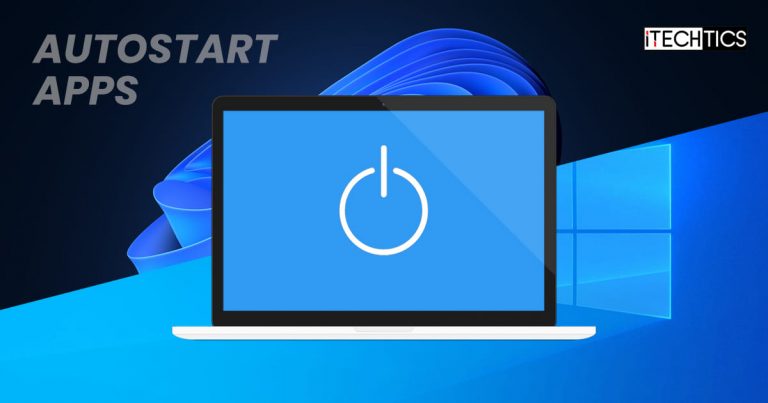Windows is designed to run applications and programs automatically as soon as you sign in to your user account. Some apps are automatically set to run at this point, while others can be manually added. This is a great feature if you repeat certain tasks daily, such as checking your email, opening a to-do document, etc.
When you perform a clean install of Windows, certain native applications are assigned to run as soon as you sign in. Here are a few common ones:
- Cortana
- OneDrive
- Microsoft Teams (Windows 11)
While some apps are added to support the auto-run feature, as they are installed on your system, such as the following:
However, some applications are not automatically launched. These need to be manually added to Windows startup, so they start automatically as soon as you sign in.
This article discusses how you can add certain apps and programs to the list so that they launch automatically.
Table of Contents
What is Windows Startup Folder
The “Startup” folder is a directory inside Windows that contains a list of apps and programs that will run automatically as soon as the system boots up. This is the first place Windows looks to launch applications automatically.
With that said, there are 2 types of startup folders in Windows
Startup Folder Per User
As the names implicate, one of the startup folders defines the apps to launch automatically for a specific user account, whilst the latter defines the common apps and programs to launch automatically for all user accounts on the computer.
The location for the Startup folder for individual users can be found at the following location. You can open file location by copying and pasting it into the Windows Explorer address bar.
C:\Users\Username\AppData\Roaming\Microsoft\Windows\Start Menu\Programs\StartupThe data for these files is saved inside the Windows Registry on the following path:
Computer\HKEY_CURRENT_USER\SOFTWARE\Microsoft\Windows\CurrentVersion\RunStartup Folder for All Users
In this folder, you will find apps that automatically run on your computer for all user accounts. These are mostly native Windows apps, such as Cortana, OneDrive, etc
The location for the common Startup folder for all users can be found at the following location:
C:\ProgramData\Microsoft\Windows\Start Menu\Programs\StartupThe data for these files is saved inside the Windows Registry on the following path:
Computer\HKEY_LOCAL_MACHINE\SOFTWARE\Microsoft\Windows\CurrentVersion\RunEach of these folders can be customized to add or remove apps that run automatically.
How to Add Programs to Startup using File Explorer
Add Programs to Individual User Accounts Startup
Let us now show you how to add applications and programs to the Startup folder for individual user accounts so that they will launch automatically when you log in:
- Start by creating a shortcut for the app that you want to run automatically. This can be done by right-clicking on an app and then clicking Create Shortcut from the context menu.

- You may be asked to “create a shortcut on the desktop instead.” Click Yes.

- Now, open the Run box by pressing the Windows Key + R shortcut keys on the keyboard.
- Type in the following inside the Run box to open the Startup folder for your current user account:
shell:startup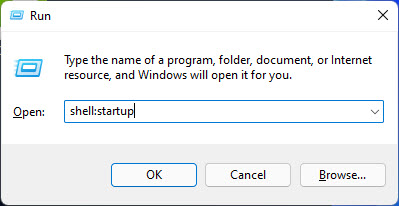
- The Startup folder will now open using File Explorer. Drag and drop the shortcut you created in steps 1 and 2 above in this folder, or cut and paste it.
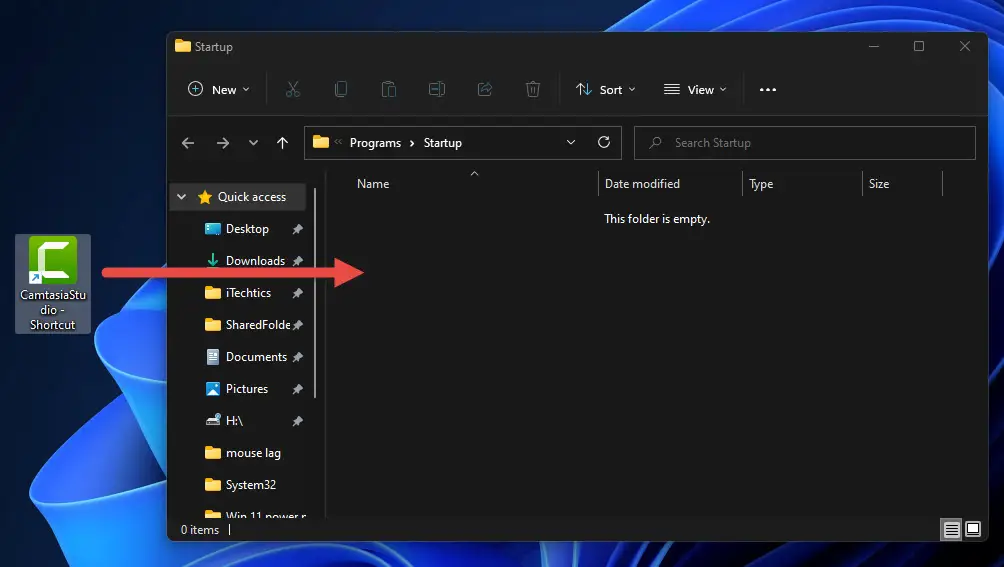
Now the next time you sign in to this user account, the app will launch automatically. You can repeat the steps above to add more programs and applications.
Add Programs to All User Accounts Startup
Perform the following steps if you want to add an app or program to launch automatically for all user accounts on your computer:
Note: Perform these steps while logged in from an administrative account.
- Start by creating a shortcut for the app that you want to run automatically. This can be done by right-clicking on an app and then clicking Create Shortcut from the context menu.

- You may be asked to “create a shortcut on the desktop instead.” Click Yes.

- Now, open the Run box by pressing the Windows Key + R shortcut keys on the keyboard.
- Type in the following inside the Run box to open the Startup folder for your current user account:
shell:common startup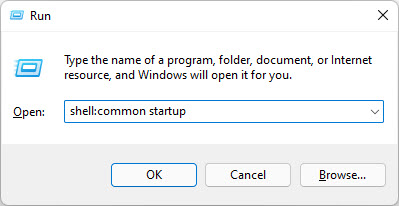
- The Startup folder, which is shared with all user accounts, will now open using File Explorer. Drag and drop the shortcut you created in steps 1 and 2 above in this folder, or cut and paste it.

The shortcut for the app pasted inside this folder will now be launched for every user on your PC.
Alternative Methods to Add Programs to Startup
The method of creating a shortcut for an app and then shifting it to the Startup folder is already discussed in the steps given above. However, there are more methods to do the same.
From Apps Folder
Shortcuts for some native applications, like the Calculator, Calendar, etc. cannot be created by using the conventional method discussed above. If you do not find an app to add to the Startup list, look inside the “Applications” folder, which can be opened by typing in the following in the Run box:
shell:appsfolderThis will open a folder displaying all your current apps on the computer. Here, right-click on the app you want to add to the Startup folder (either user Startup or common Startup) and click Create shortcut from the context menu.
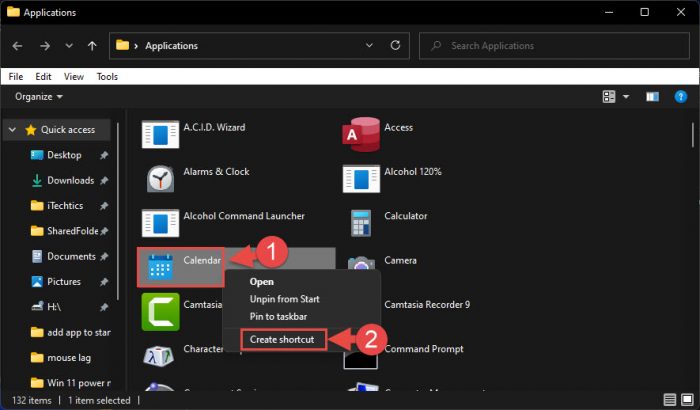
You will be asked to create a shortcut on the desktop instead. Create it there and then move the shortcut to the respective Startup folder.
Directly Inside Startup Folder
You can also create a shortcut inside the Startup folder. Here is how:
Note: This method is only valid for adding an app to the user-specific Startup folder since the Common Startup folder does not allow you to create shortcuts directly.
- Open the Startup folder by typing in the following in Run:
shell:startup
- Inside the Startup folder, right-click on an empty space, expand New from the context menu, and click Shortcut.

- From the Create Shortcut Wizard, click Browse and select the app you want to add to automatic startup. When selected, click Next.

- Now enter a name for the shortcut and click Finish.

The shortcut will now be added to the Startup folder and the selected app will launch each time you sign in to your account.
How to Add Programs to Startup using Task Scheduler
You can also schedule apps and programs to start automatically as soon as you sign in to your account using the Task Scheduler Management Console. However, this method only works for individual users, and not all the user accounts on your computer.
Perform the following steps to schedule an app start as soon as you log in:
- Open the Task Scheduler by typing in taskschd.msc in Run.

- From the left pane, right-click “Task Scheduler Library” and then click Create basic task from the context menu.

- From the Create basic task wizard, enter a name for the task and click Next.

- In the next window, select “When I log in” and click Next.
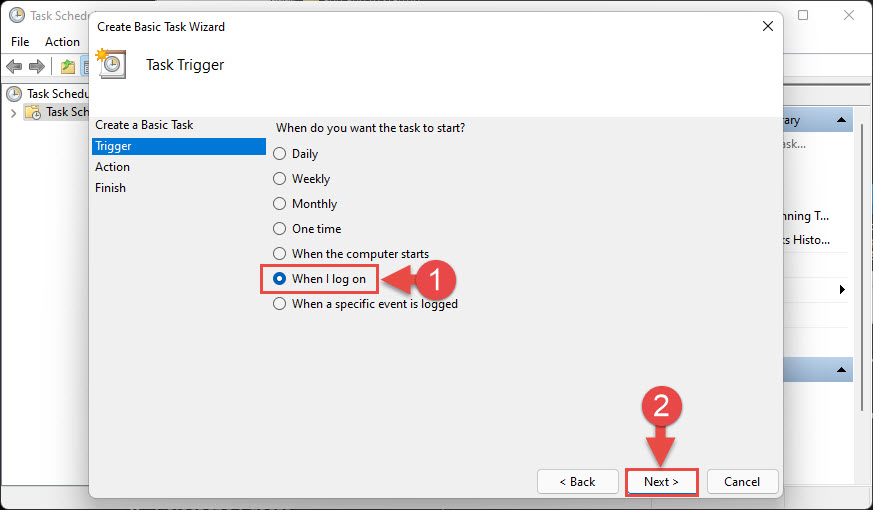
- Select “Start a program” and click Next.

- In the next window, click Browse and then select the app that you want to run automatically. When selected, click Next.

- On this screen, ensure all configurations are correct and click Finish.

The selected application will now launch automatically each time you log in to this user account.
If you wish to remove the app from launching automatically, simply delete the task from the Task Scheduler.
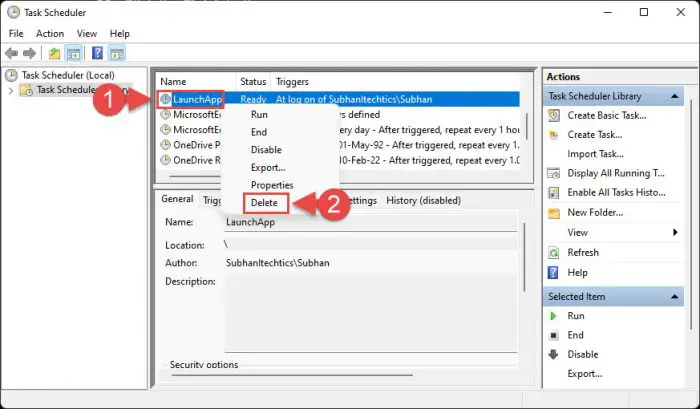
How to Add Programs to Startup using Windows Registry
The methods discussed below involve manual changes to the Windows Registry. Misconfiguration of critical values in the system’s registry could be fatal for your operating system. Therefore, we insist that you create a system restore point before proceeding with the process.
Add Programs to Startup for Individual User Accounts
The steps below guide you on how to add an app or program to the Startup list for individual user accounts using the Windows Registry Editor:
- Open the Registry Editor by typing in regedit in Run.
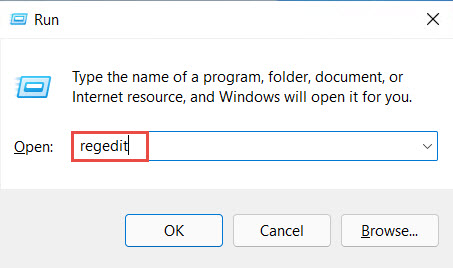
- Now paste the following into the address bar at the top for quicker navigation:
Computer\HKEY_CURRENT_USER\SOFTWARE\Microsoft\Windows\CurrentVersion\Run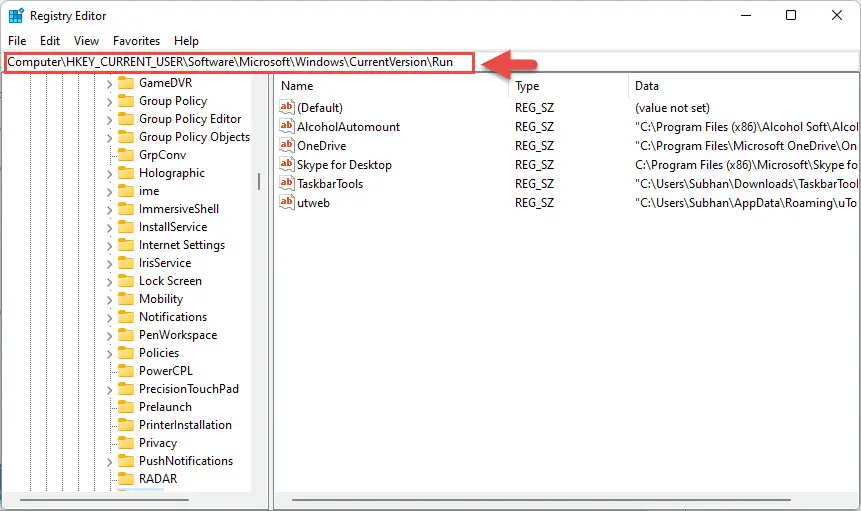
- Right-click Run from the left pane, expand New from the context menu, and then click String value.

- Name the string whatever you want. It is recommended that you give it a name so that it defines the program you are about to add to the Startup list.
- Open the created new string and enter the complete path of the app you want to run automatically under Value Data. Then click Ok.

- Now restart your computer for the changes to take place.
When the computer reboots, you will see that the selected app will now run automatically.
Add Programs to Startup for All User Accounts
You can follow a similar procedure to add an app for automatic startup in Windows with Windows Registry for all user accounts on your computer. Here is how:
- Open the Registry Editor by typing in regedit in Run.

- Now paste the following into the address bar at the top for quicker navigation:
Computer\HKEY_LOCAL_MACHINE\SOFTWARE\Microsoft\Windows\CurrentVersion\Run
- Right-click Run from the left pane, expand New from the context menu, and then click String value.

- Name the string whatever you want. It is recommended to name it something, so that it defines the program you are about to add to the start list.
- Open the new string created, and enter the complete path of the app that you want to run automatically under Value Data. Then click Ok.
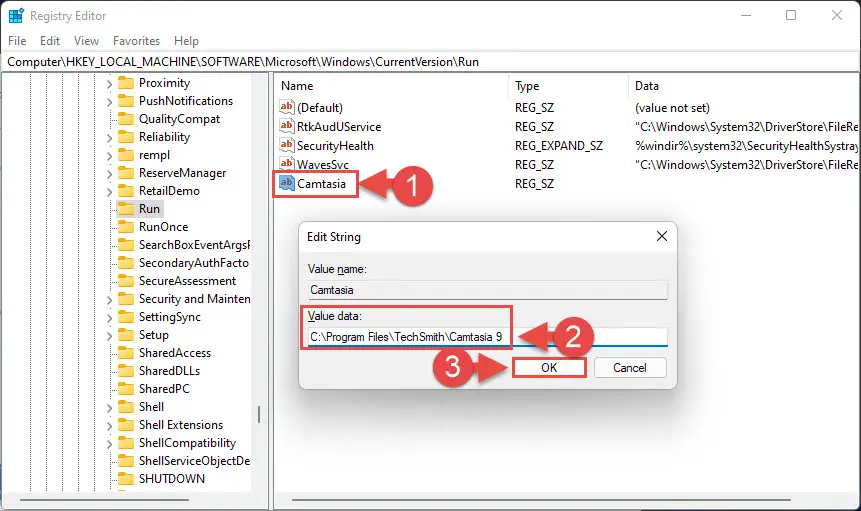
- Now restart your computer for the changes to take place.
Disadvantages of Adding programs to Startup
You must already know the advantages of adding applications and programs to the Startup folders in Windows. However, there is also a drawback to doing so.
Apps that launch automatically will try and open simultaneously when the computer boots up. This will exert a load on the system resources (CPU and RAM) which may affect other critical Windows startups, such as background services and apps.
Therefore, adding more apps to the Startup folders will increase the overall time it takes for your PC to become fully operational.
We suggest that you only add applications and programs for an automatic startup that are essential, and remove or disable all others.
How to Disable Programs Auto Startup
From Startup Folder
If you have manually added an app or program to the Startup folder for it to launch automatically, then it needs to be removed from the folder to prevent that specific app from launching itself. It can be done using the following method:
- Type in the following in the Run box to open the respective Startup folder:
- For specific user:
shell:startup - For all users:
shell:common startup
- For specific user:
- Here, right-click on the app that you want to disable from launching automatically and click Delete from the context menu.

The app will now no longer launch automatically when you sign in.
From Windows Registry
If you previously added an app to launch automatically from the Registry Editor, then the respective registry will need to be deleted to remove the app from launching at startup. Here is how:
- Launch the Registry Editor by typing in regedit in Run.

- Now paste the respective path into the address bar at the top:
- For specific user:
Computer\HKEY_CURRENT_USER\SOFTWARE\Microsoft\Windows\CurrentVersion\Run - For all users:
Computer\HKEY_LOCAL_MACHINE\SOFTWARE\Microsoft\Windows\CurrentVersion\Run
- For specific user:
- Here, right-click on the string value from the left pane and click Delete from the context menu.

- Now restart your computer for the changes to take effect.
From Task Manager
You can disable applications from starting up automatically through the Task Manager. Here is how:
- Open the Task Manager using the CTRL + Shift + Esc shortcut keys, and then switch to the Startup tab.
- Here, select the app that you want to disable and then click Disable from the bottom of the window.

From Settings App
To disable applications from launching automatically at Windows startup, perform the following steps:
- Navigate to the following location:
Settings app >> Apps >> Startup - Here, toggle the slider in front of the app that you want to disable into the Off position.

This will now prevent the app from starting automatically. If you want to resume the feature, simply toggle the slider again into the On position.
Closing Words
The automatic Startup feature in Windows is sometimes a blessing in disguise, especially if you use the same applications daily. However, you must use it wisely and only add the apps and programs required, so it does not affect your system’s performance.
If you have many apps that start up automatically and are no longer in use, we suggest that you disable them using any one of the methods discussed above in this post.

